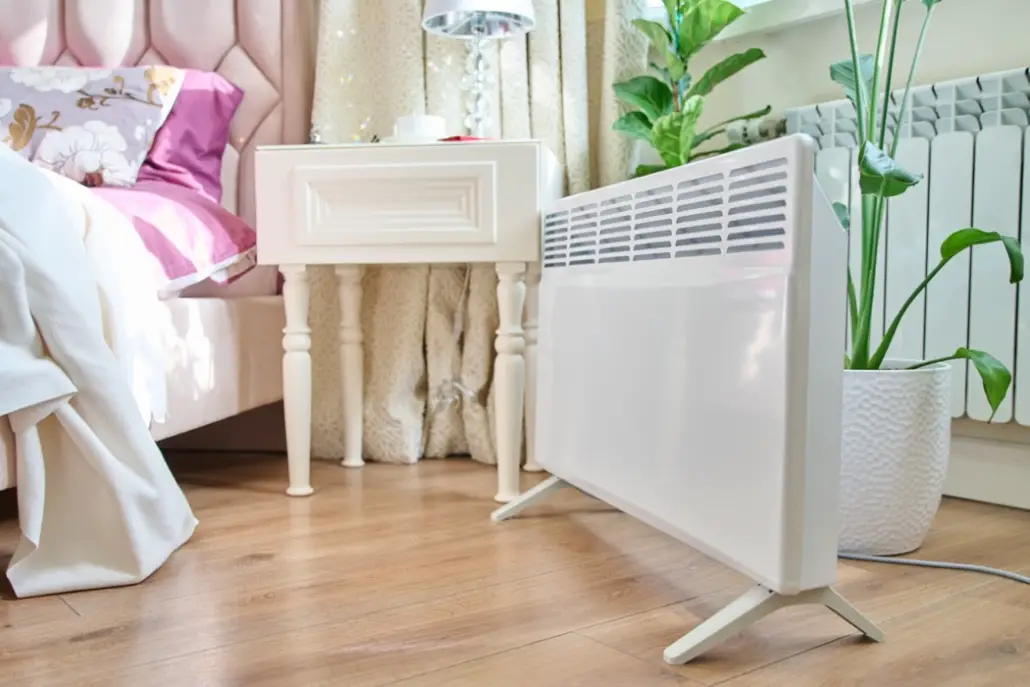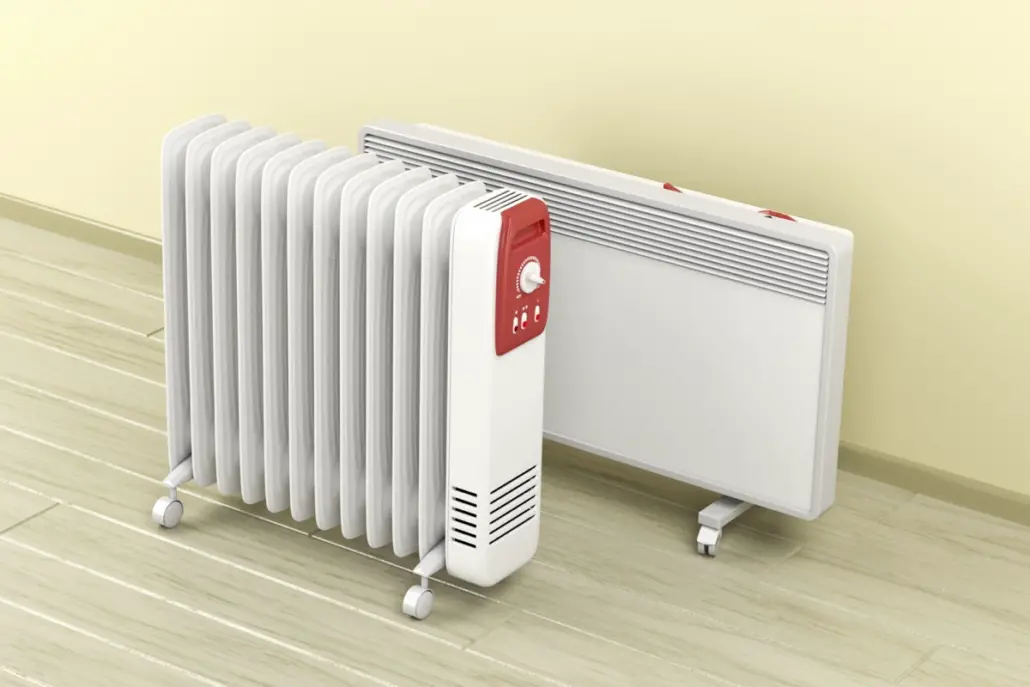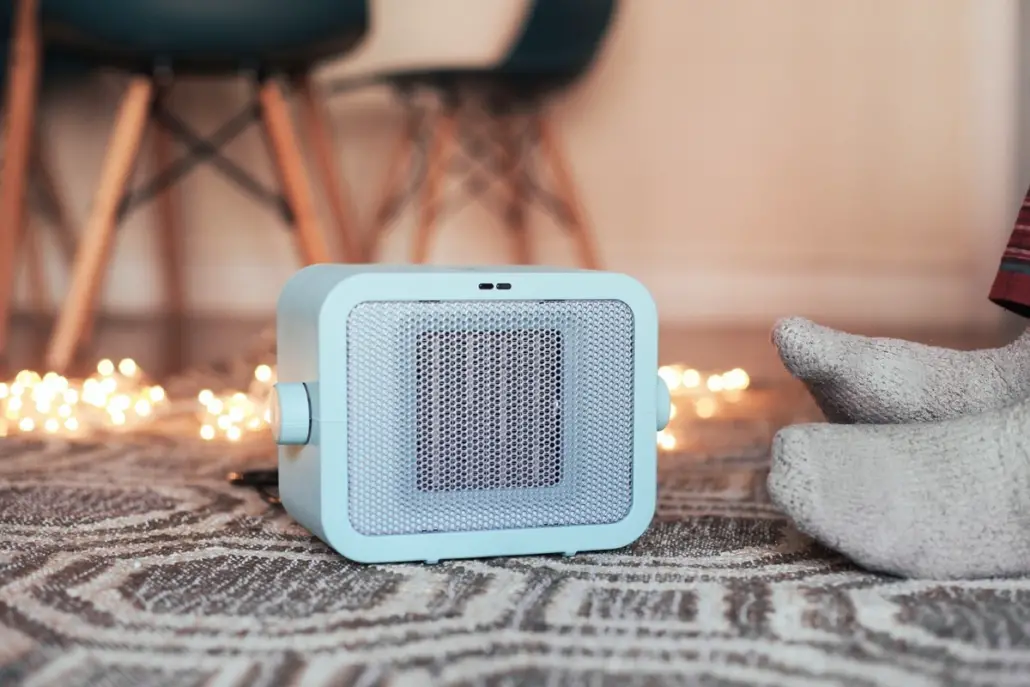Fan Heater Disadvantages and Common Problems – Are They Expensive to Run

Many of us simply do not like to be cold, so we love to use those handy apparatuses to keep us warm during the winter months. However, sometimes, our heaters are just too slow to heat up the room and get the cold out of our bones.
This is where a fan heater will greatly help heat up the room a bit faster so we can be cozy. But are fan heaters safe to use in our homes, and are they more expensive than normal heaters?
Let’s take a look at fan heaters, their disadvantages, and common problems encountered with them.
What Is a Fan Heater?
A fan heater is a normal heater with an element that heats up, but the main difference is in the fan added to it. These fan heaters are available in many sizes, with some having stronger fans to circulate the hot air further.
Fan heaters use electricity to operate the heating elements, enclosed in a plastic or metal body. This simple construction makes them easier to make, and for that reason, they are less expensive than most other types of space heaters.
Smaller ones are mostly used at home, while larger versions are available to be used in an office setup.
How Do Fan Heaters Work?
As already mentioned, fan heaters make use of a fan that is installed behind the element or heat source to blow wind over it. The wind heats up and is distributed evenly in the space, thus heating the whole area in front of it.
The heated wind is not as hot as the element, but it will quickly replace the cold in the room with warmth. A stronger fan will blow the heated wind further to penetrate even the farthest corners to remove the cold from your space.
Both the heater and the fan need some type of energy to keep them operating; this is accomplished with electric energy. This raises another question: are fan heaters then more expensive to operate than normal heaters?
All fan heaters come with a separate on/off switch for the heater and for the fan. This double switch means you can operate the heating element without the fan. But that will not be very practical because they are designed in such a way to be more effective when used in tandem.
There are also different levels of heating and fan speeds to select for more effective heat distribution in the room. The larger the room, the higher you will have to set the fan speed and the element heat for effective heat distribution.
Normal element heaters use a reflective backing to radiate the heat forward into the room to be more effective. On the other hand, a fan heater uses the fan to distribute the heat in the area you want to heat up.
The fan heaters work very much like an induction oven by using a fan to distribute heat evenly in the space of your home.
Are Fan Heaters Expensive to Run?

It is all in the name; when a fan heater is running, both the heater and the fan need electricity to operate. While operating, the fan itself doesn’t need that much energy; heating the element uses a lot more to warm up and stay hot.
These space heaters come in different power consumption configurations, but most use between 1000 and 2400 watts of power to operate. You can find the power usage of the heater at the back indicated in W, which is watts per hour.
This means that you will pay about $0.30 to $0.70 for every hour the unit is working to heat up your room. This is only to keep the element hot; you need to add a very small amount of power usage, which is around 40 watts.
So, in essence, you pay a bit more to keep the fan heater running than what is the case with a standard element-only heater. Use this energy usage calculator to determine how much your fan heater will cost you to keep your room cozy and warm.
Advantages and Disadvantages of Fan Heaters
There are both benefits and disadvantages when it comes to using a fan heater to heat up the space in your home. Let’s take a closer look at these points to make it easier for you to judge whether they are good or bad for you.

Advantages
Here is a list of the benefits of a fan heater and how it will improve your life and give you a nice cozy room.
- A fan heater has the capability to heat up any room much faster than most types of heaters.
- Fan heaters are a bit more affordable than most types of heaters because of their simple and easy construction.
- It will heat the room effectively and evenly with no cold spots around the room.
- This type of heater is capable of heating the entire room and not just the space in front of it.
- If you are looking for a safe way to heat the space in your home, this is the way to go.
- Because all the working parts are safely enclosed and not exposed to the outside, fan heaters are quite safe.
- Most fan heaters come with an option to select the desired temperature you want it to keep the room at.
- To further increase the safety factor, fan heaters come with an auto-off option to switch the device off when it reaches the desired level.
- Fan heaters are most of the time designed with a portable form factor so you can carry it to where you want to use it.
- When the summer finally comes, you can use this device in the fan-only option to keep you cool.
- These heaters are easy to operate with only a few selections, so even younger children can use them without any problems.
- Many of them come with a simple dial-style button with easy-to-understand and read heat level and fan speed options.
- A fan heater is the ideal space heating device to use for larger rooms because of the effective heat distribution.
- You can use this type of heater to heat just one room and turn off the central heating in your home to save energy.
- They are convenient to use in your home with the easy carry handle and easy operation of this simple space heater.
- Fan heaters are safe to use around small children and pets because everything is safely enclosed inside the body of the heater.
- Modern fan heaters are designed in such a way as to save energy usage with automatic features built into them.
- These heaters are energy efficient for the fact that almost all the heat generated is blown into the room by the fan.
- A room heated by a fan heater will stay warm longer because of the effective way it warms the whole room.
Disadvantages of Fan Heaters
Now we take a look at the less good features of a fan heater to see whether they outweigh the many advantages.
- The fan of these heaters is noisy and can be annoying for some people, especially while they are sleeping.
- For a fan heater to operate safely and effectively, you must leave ample space around it to draw air into the fan.
- Forced air heaters may cause the humidity in the room to dry out the air in the room to levels that are not safe for you.
- It can dry out the air to very dangerous levels, especially if the heater is running for a long time, and cause chest problems.
- The symptoms of allergic reactions can increase with the air blowing all over the room and causing them to worsen.
- Nobody likes dry skin; this worsens during the winter months but can be even worse when using a fan in your home.
- Allergens can easily be blown up and around in the room, which can cause heightened allergic reactions.
- Fan heaters can also lower the oxygen levels in the room, which may cause a range of symptoms, such as dry eyes and more.
- You will need a humidifier in the room if you want to keep the humidity levels at the desired level.
Common Problems With Fan Heaters
Some problems may occur with fan heaters. You should consider them before buying one.
Insufficient Airflow
This type of problem might occur when the fan is not working as it should and not blowing a strong wind. This may cause the heat not to reach every part of the room and won’t heat the whole room efficiently.
This can also be because of the lack of surrounding space with no proper airflow around the heater.
Noises Coming from the Heater
If you hear a screeching or grating sound, it is almost always the bearings of the fan that is dry or busy acting up. If you have a small portable unit, the best thing is to get rid of the unit and buy yourself a new one.
Larger units need the hand of an expert to replace the fan or just service it by putting lubricant on the fan bearings.
FAQs About Fan Heaters

Here are answers to some of the most-asked questions about fan heaters so you can make an informed choice when buying one.
Can You Keep a Fan Heater on While Sleeping?
If you have one of the very first models of fan heaters, then it is not recommended that you keep it on all night. Most of the older heaters don’t come with an overheat protection feature included, so they are a fire hazard if kept on.
The older models and some of the newer entry-level fan heaters are quite noisy because of the fan running all time. This may interrupt your sleep, and you won’t get a good night’s sleep with the noise going on all night.
Modern fan heaters come with overheating protection, and the fans are very quiet, so it doesn’t interrupt your sleep. This is one of the newest models of fan heaters that comes with all the safety features included for your safety.
What Types of Fan Heaters Are Available?
Fan heaters come in many different sizes and shapes, from small stand-alone units to those larger ones that are mounted on the wall. Some of these wall-mounted fan-forced heaters are capable of heating up quite a large room in a very short time.
They are also available in the form of a ceiling-mounted fan with a heater to effectively heat the room all around you. These are some of the more popular designs of fan heaters available for those who are looking to install one.
They all come in many different power usage configurations and can be used in small rooms or heat very large rooms.
What Types of Elements Are Used in Fan Heaters?
Fine metal coil elements are mostly used in fan heaters, from the small stand-alone ones to the larger industrial versions. The elements found inside fan heaters are the basic elements used in most fans that can be used for domestic use.
Are Fan Heaters Expensive?
Those small portable fan heaters for domestic use are normally some of the most affordable heaters available on the market. The larger, wall-mounted, fan-forced heaters are more expensive, and they use a lot more power than the smaller units.
Even though they are made with a simple design, ceiling-mounted fan heaters are also a bit more expensive than normal units. Because they come in a wide range of configurations, sizes, and designs, the price range will be quite wide.
Conclusion

You can see that there are some disadvantages when using a fan heater to keep the room at a desirable temperature level. But the benefits of having a fan heater to keep you cozy and warm are far more than the negative features.
It is a question of personal preferences when it comes to the way you want to heat up your home during cold winter nights. There is also nothing wrong with looking at these handy devices that will help to quickly heat your room.
At least try out one of the smaller units to see how effective they are and whether you like this type of heater.


